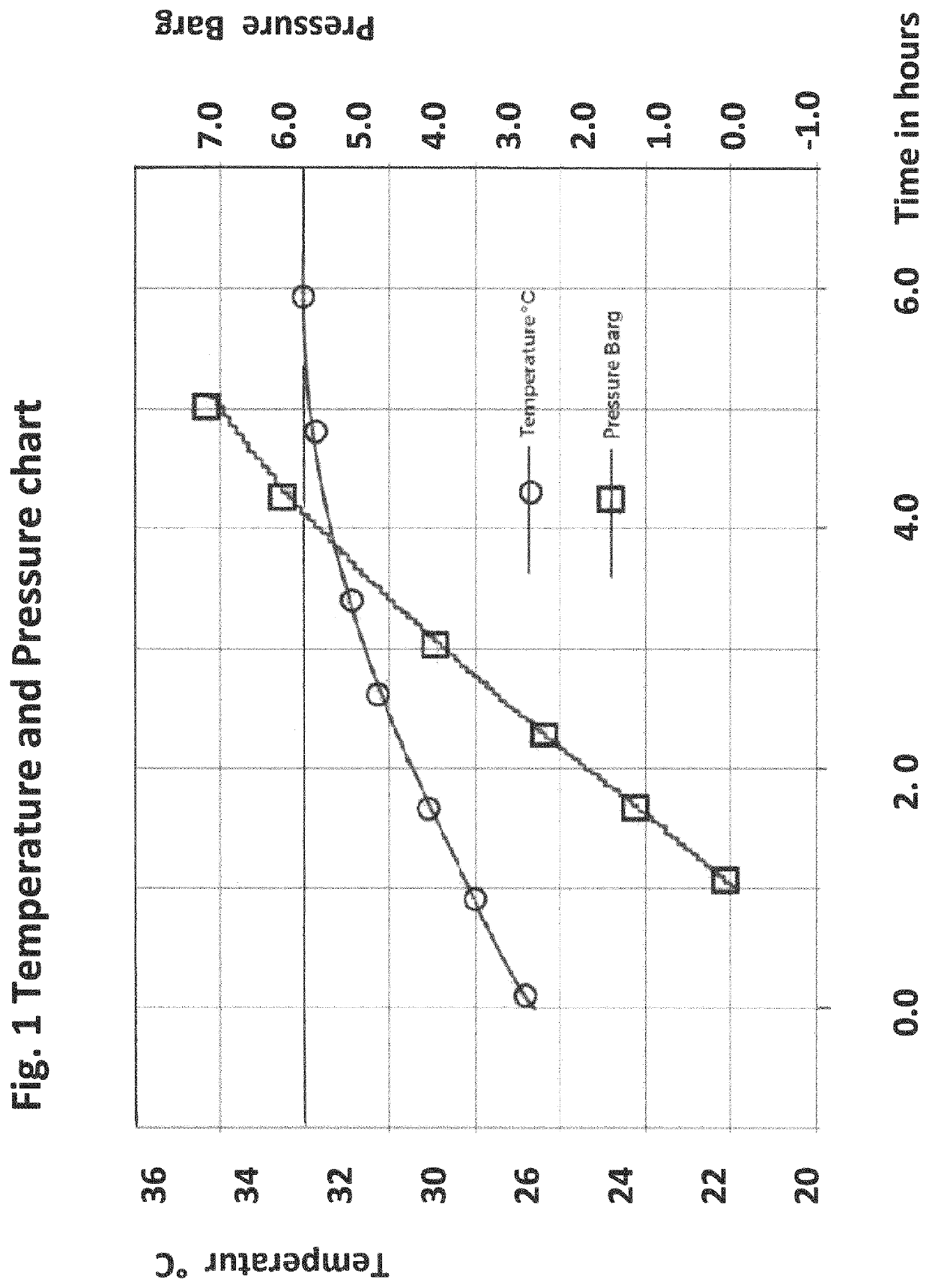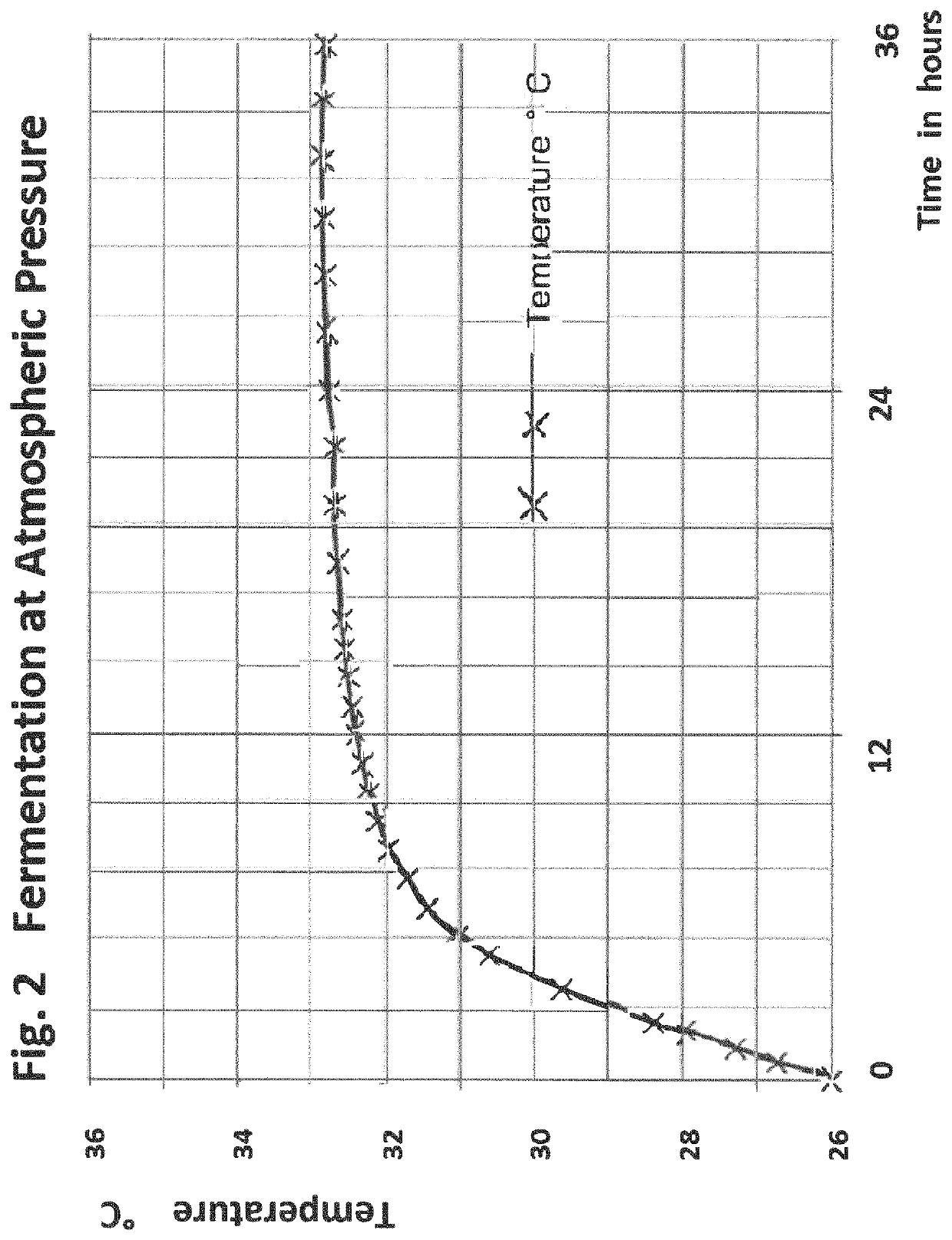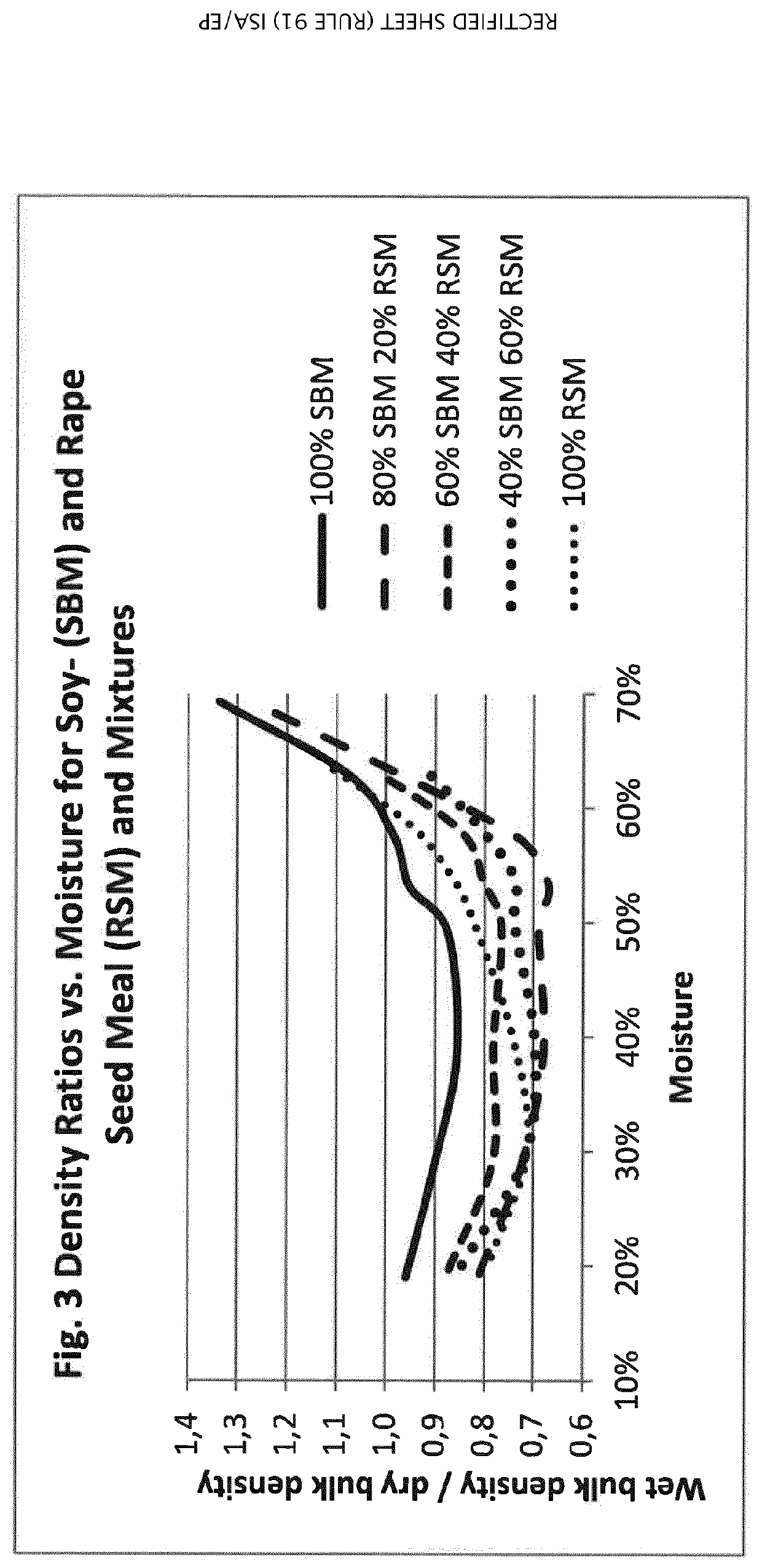Vertical plug-flow process for simultaneous production of ethanol and a fermented, solid transformation product of the substrate
a technology of vertical plug-flow and substrate, which is applied in the direction of vegetable protein working up, antibacterial agents, antinoxious agents, etc., can solve the problems of uneven retention time of biomass, negatively affecting transport behavior,
- Summary
- Abstract
- Description
- Claims
- Application Information
AI Technical Summary
Benefits of technology
Problems solved by technology
Method used
Image
Examples
example 1
[0119]Comparative Incubation in an Open and a Closed Batch Tank of a Biomass Comprising Polysaccharides and Proteins from Pulses
[0120]In the following the incubation at atmospheric pressure and elevated pressure of a biomass based on soya is compared.
[0121]1.1 Substrate Mixture:
[0122]10 kg of dehulled, defatted and desolventised soya flakes were mixed with 3 kg of a slurry of yeast (10% dry matter) and added water in an amount to reach a dry matter content of 51% by weight in the mixture. The ratio wet bulk density / dry bulk density of the substrate mixture was 0.832.
[0123]1.2 Incubation Tank:
[0124]A 40-litre insulated autoclave equipped with a temperature- and pressure gauge probe was used as an open and closed batch tank.
[0125]The tank was filled with approx. 15 kg of substrate mixture and left open for the test at atmospheric pressure, and when closed for the incubation under pressure the lid had a valve with a pressure regulator set to open at 6.0 bar.
[0126]1.3 Results:
[0127]FIG....
example 2
[0132]Ratio of Wet Bulk Density / Dry Bulk Density for Preferred Substrates Based on Various Biomasses
[0133]2.1 Biomasses Used in the Examination:
[0134]Soya
[0135]The soya used was defatted soya bean meal.
[0136]Maize
[0137]The maize used was whole maize, ground on a hammer mill through a 3.5 mm sieve.
[0138]Wheat
[0139]The wheat used was whole wheat, ground on a hammer mill through a 3.5 mm sieve.
[0140]Sunflower
[0141]The sunflower used was defatted sunflower pellets, ground in a blender.
[0142]Rapeseed
[0143]The rapeseed used was defatted rapeseed meal.
[0144]Fava Beans
[0145]The beans used were whole fava beans, ground in a blender.
[0146]Pea Protein
[0147]The pea protein used was a pea protein concentrate.
[0148]2.2 Description of the Procedure:
[0149]The amount(s) of biomass and water tabulated in the following was mixed for ten minutes followed by fifty minutes of equilibration in a closed container.
[0150]After this the material was poured into a measuring cup of 500 mL and its mass determine...
example 3
[0163]Lab-scale incubation tests of prior art method vs. new technology method
[0164]3.1 Background:
[0165]The background for the following lab-scale incubation tests was to imitate the conditions for the prior art method (PAM) as described in WO 2013050456 and the conditions in the method of the present invention (NTM).
[0166]In the prior art method (PAM) the developed CO2 has free access to be released to the surroundings, whereas this is more limited in the new technology method (NTM) of the present invention i.e. the partial CO2 pressure is higher.
[0167]3.2 Materials and Methods:
[0168]3.2.1—Materials
[0169]Biomasses: Soya Bean Meal (SBM), Rape Seed Meal (RSM) and Sunflower Seed Meal (SSM)—as described in section 2.1.
[0170]Water: Normal tap water
[0171]Yeast: Baker's yeast from De Danske Grfabrikker, Grenå, DK
[0172]Processing aid: α-galactosidase from Bio-Cat (12,500 U / g)
[0173]Each incubation mixture had a biomass content of 150 g of DM, varying amount of water, 0.4% yeast by weight o...
PUM
| Property | Measurement | Unit |
|---|---|---|
| temperature | aaaaa | aaaaa |
| temperature | aaaaa | aaaaa |
| temperature | aaaaa | aaaaa |
Abstract
Description
Claims
Application Information
 Login to View More
Login to View More - R&D
- Intellectual Property
- Life Sciences
- Materials
- Tech Scout
- Unparalleled Data Quality
- Higher Quality Content
- 60% Fewer Hallucinations
Browse by: Latest US Patents, China's latest patents, Technical Efficacy Thesaurus, Application Domain, Technology Topic, Popular Technical Reports.
© 2025 PatSnap. All rights reserved.Legal|Privacy policy|Modern Slavery Act Transparency Statement|Sitemap|About US| Contact US: help@patsnap.com



